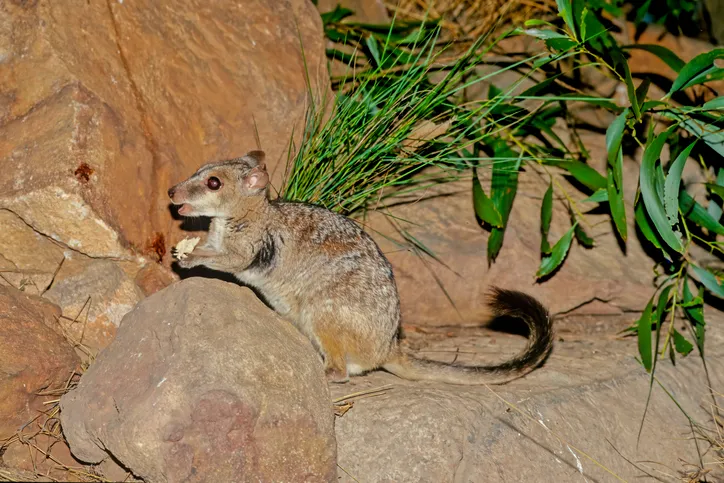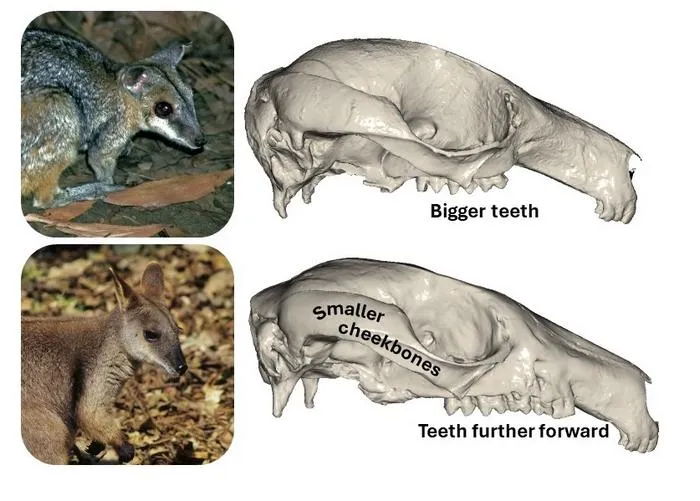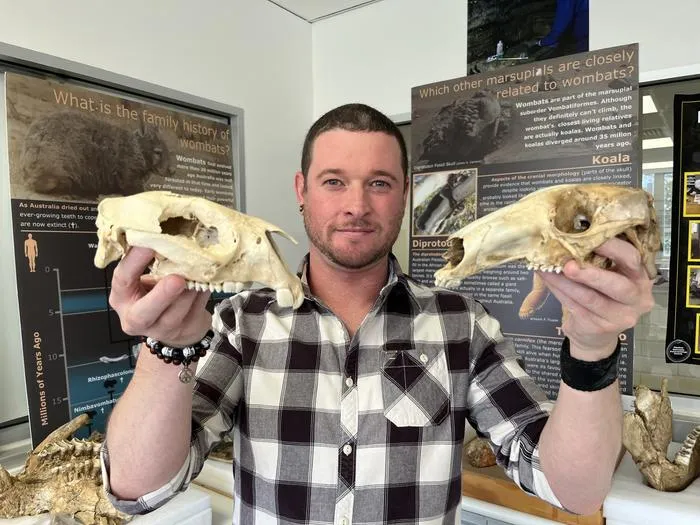The nabarlek is one of Australia's smallest species of rock-wallaby. Weighing less than two kilograms and measuring a little over 30cm in length, it's about the size of a loaf of bread, or half the weight of a chihuahua.
Despite its diminutive form, a new study suggests that this dwarf rock-wallaby packs much more of a punch in its bite than its larger relatives.
The research, undertaken by scientists from Flinders University in Adelaide, and published in Royal Society’s Biology letters, reveals that nabarlek are able to eat similar types of food to relatives eight times their size.

How to measure a bite
Prior to the study, researchers at Flinders University already knew that some small species of rock-wallaby, such as the nabarlek, can eat similar types of food to relatives that are eight times larger.
“We therefore suspected that something happened in the evolution of their jaws to allow them to stick to these diets,” says Vera Weisbecker, Flinders University Associate Professor in Evolutionary Biology, and co-author of the study.
Intrigued to know more, the researchers scanned the skulls of nearly 400 rock-wallabies (all 17 species), which included two species of dwarf rock-wallaby. The extensive study allowed them to compare the different features that make up the skulls.
- How and why do kangaroos hop?
- “How worried should I be?” A quest through Australia's rainforest in search of the world's most dangerous bird
- 10 deadliest snakes in the world: meet the world's most venomous snakes and their lethal bite
The results revealed that, aside from typical differences in brain and eye size that are usually seen between bigger and smaller animals, there were also differences in the features of the skull that are used for eating.
Dr Mark Eldridge from the Australian Museum, who also co-authored the study, says: “We found clear indicators that both dwarf rock-wallabies have adaptations to harder biting: they had shorter, rounder snouts and teeth positioned at the back of the jaw where they are more effective at harder bites.”

Mighty molars
The researchers also discovered some surprising differences in the size of the dwarf rock-wallaby teeth compared to the larger species; some of the teeth of the dwarfs were much larger, for their size, than those of the bigger species.
“This makes sense, because many animals that need to bite harder into their foods tend to have bigger teeth for their size,” says study leader Dr Rex Mitchell from the Morphological Evo-Devo Lab at Flinders University.
Analysis of the skulls revealed that the nabarlek has the largest molars of all the rock-wallaby species. It is also the only species of marsupial known to continuously grow new molars throughout its life.
While the nabarlek was observed as having the largest molars, the second dwarf species of rock-wallaby was found to have the largest premolars.
This likely indicates adaptations to different vegetation types, say the scientists. Larger molars are better for grinding up grass and other plants that are closer to the ground, while larger premolars are better at slicing through the leaves and twigs of shrubs.
“If I were a vegetable, I would not mess with a pygmy rock-wallaby," says Dr Mitchell. "They totally have ‘Little Wallaby Syndrome’.”
"The findings are important because the functional effects of skull size on skull shape are often ignored because differences in size are not generally considered to be related to feeding adaptations," adds Dr Mitchell.
The research concludes that smaller animals often need to have harder-biting skulls than larger animals if they want to eat the same kinds of foods.
- Australia’s earless dragon is so rare it was thought extinct, until two ecologists came across one in the wild
- The thylacine became extinct in the 1960s… or did it?
- How an Australian spider uses its web as a fishing net

The article, Functionally mediated cranial allometry evidenced in a genus of rock-wallabies(2024), by D. Rex Mitchell, Sally Potter, Mark DB Eldridge, Meg Martin and Vera Weisbecker was published in Biology Letters.
Specimens for the study were provided by the Museum and Art Gallery NT, WA Museum, SA Museum, Australian Museum, Queensland Museum and the Australian National Wildlife Collection.
